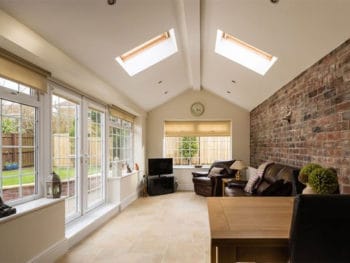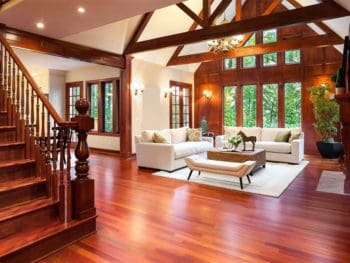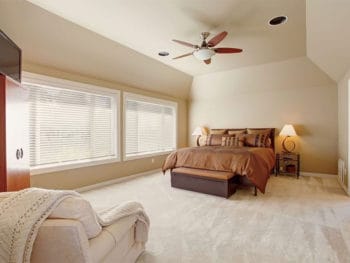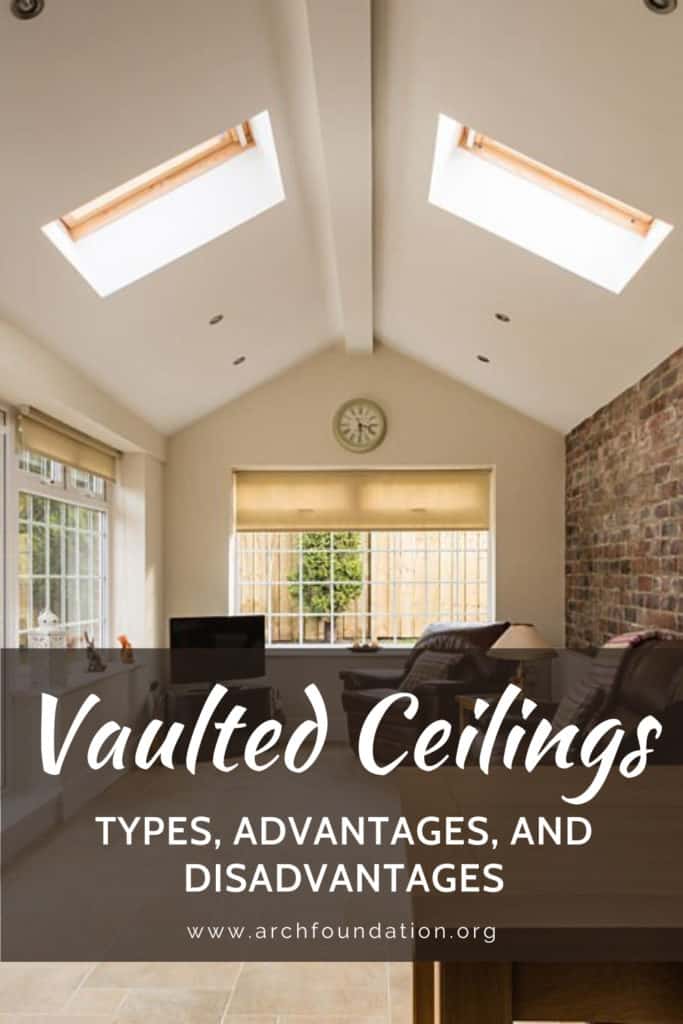Vaulted Ceilings 101: Types
When it comes to the construction of the ceiling at your home, some prefer to keep it contemporary while others cherish the stylish architecture of the good-old-days. One such architecture form is a vaulted ceiling. In case you were wondering what are vaulted ceilings, wait and read through this blog that decodes everything that is to know about these ceilings.
The grand allure and charm that comes from such ceilings is surely something every homeowner with a knack for uniqueness would love to try. Even though this architectural variant has faded away with time, it is no doubt something that adds grace and elegance to your mundane modern-day spaces.
Known by names such as raised ceilings, cathedral ceilings, high ceilings, and more, this variant stems from a rich history that is 100 years or older. So, if you are someone who cherishes the beauty of these vaulted ceilings, here is a complete guide for you to check out and opt for an informed decision.
Vaulted Ceilings: The Basics You Need to Know

By the classic definition, your vaulted ceilings tend to be arched. However, all the vaulted ceilings need not fit under the exact same definition. Any variant of raised ceiling that is heightened a minimum of 8 feet or more is generally considered vaulted. If you have doubts regarding the difference between an arch, a dome, and a vault, here is a quick video that explains the same:
Plus, the vaulted ceilings aren’t simply restricted to a singular design. Through the course of history, this ceiling variant has evolved in shape and patterns with influence coming from various aspects of life. So, here are some well-known variants of vaulted ceilings that evolved through time to the present-day modern ceilings.
Top 8 Vault Ceiling Types for 2021
Vault ceilings, although emerge from the bygone era, have made their way to modern-day architecture. You can find several architects that promote the incorporation of such majestic ceilings into the houses for a picturesque and offbeat look.
Now that you know what are vaulted ceilings let us take a quick look at its different types before you choose one for your home.
Domed Vaults:
The dome-style vaulted ceilings precede the era when cathedrals popularized this architecture style. This particular design dates way back, and such examples can easily be found in and around the Cyprus area. In Khirokitia, you can find circular buildings that date back to 6000 BCE and denote a beautiful Neolithic village that existed with the use of unfired bricks made from mud.
These bricks helped shape up the domed vaults similar to a way that a beehive would look. Such prominent examples of beehive vaults can also be found in areas such as Crete and Northern Iraq.
However, even when in the crude stage, these domed vaults might not necessarily be considered proper vaulted ceilings as they revolve around the vertical axis as opposed to the vault style that forces it out to the 3rd dimension.
Pitched Brick Vaults:
Known to evolve from the beehive and the domed vaults somewhere around Mesopotamia in 3000 BC, this particular vaulted ceiling style was a bit different with regards to installation. As opposed to being laid out in a radial manner, the bricks were placed in a vertical format while being leaned at the angle that freed this vault-style from relying completely on the center for its completion.
Barrel Vaults:
The barrel vault works on a creative yet simplistic design known to closely resemble a barrel that is cut by half in a lengthwise manner. This design makes the best use of space while creating a depth to the room.
Found initially in Babylon, this design was brought into being by the Sumerian architects that used fired bricks and clay mortar. This variant of barrel vault can be seen in ancient Assyria and Egyptian architecture. Not just that, the dominance of this design can be seen throughout the Pre-Islamic Persia and Ancient Rome.
Check out this quick video that explains more about the barrel vaults:
Groin Vaults:
With the implementation of the groin, vaults came a distinctive shift in the designs for vaults. This also signaled the architectural ingenuity evolution. The groin vault variant is generally created with the help of two semicircular styles of the barrel vaults.
Both these semicircles measure the same in terms of diameter and intersect with each other. However, the design can be easier to visualize, yet the implementation can be a tad bit difficult.
Nevertheless, this construction pattern was used extensively in Rome, and its presence can be seen in the artistically beautiful Caracalla Baths. As this design evolved from the ancient baths, this vault was used later with an increase in the diameter by 142 feet, as seen in the Rome Pantheon.
If you have plans to add a groin vault ceiling to your home, here is a video that explains how to frame one:
Rib Vaults:
With the Rib Vaults, there was a revolutionary change in the way architects created the ceilings. Rib vaults are both impressive in their visage & reflect an intricately complex design. When you take an initial look at the design, the rib vaults can be deemed as a design that is fairly complicated.
However, it was surely achievable through the set-up of diagonal ribs that are established as centers. These ribs then carried the vault design that ensured better support and design implementation.
Further, this design was helped with the use of the semicircular arch as opposed to the cylindrical ribs. This provided a look of domed vaults that come with ribs.
Fan Vaults:
Another popular style of the vaulted ceiling is fan vault. This vault-type uses a single curve for centering the ribs. Further, it is aided with the help of a 4-centered arch. Here, the lower-end of the arch is created as a section of a conoid.
On the upper end, an expandable variant of the flexible radius is added across your vault. This results in the creation of an intricate variant of ribs that spread in a way similar to fans or peacock tails.
Road to the Cathedral Vault:
The Roman and Byzantine architecture experienced a return in the domed-style vault ceiling. However, it came with a greater level of complexity. As the domes established themselves amid the arches with great height, there was an illusion that showed the absence of the co-dependence factor.
The Road to the Cathedral Vault style was predominantly seen in Istanbul’s Hagia Sophia. The addition of an octagonal-domed arch provided an appearance of an umbrella-like structure with semi-circular barrel shape in the Roman churches.
As the Gothic look took precedence during the mid-ages, these vaults evolved from the vulnerable form visible from both outside and inside to simply the inside variant. These vaults were protected with the help of wooden roofs. This brought in a change to the roof leading to more prominence.
Modern-Day Vaults:
Today, the vault design comes from the use of the hyperbolic paraboloid. This particular architectural marvel comes with a double concave and convex curve that is present on varying axes.
The overall number of axes can be two or more. To say the least, the beauty of this hyperbolic paraboloid tends to be quite simple. Two parallel straight lines are designed to act as a base for each origin point on its surface.
The hyperbolic variant is used with the sections that are horizontal in alignment. On the other hand, the parabolic variant is used in sync with vertical sections. It is used mostly with the shell roofs. Straight members are used for the construction of the hyperbolic paraboloids.
Pros of Using Vaulted Ceilings

Now that you know what are the vaulted ceilings and types of vaulted ceilings available for you to try out let us know more about their advantages and why they could be your best decision ever.
Airier, Larger, and Grander:
If you have ever been to a cathedral or church, you will surely notice the beautifully incorporated vault ceiling design. This particular style brings in a feel of more space into the room. So, if you decide to add this ceiling style to your house, it will add benefits such as an airy feel and a grand look.
This works especially well if your overall room area is small, and you need to add depth to the overall feel. With the vaulted ceilings, you get a room that is bigger and better.
Additional Natural Light:
Raised ceilings or vault ceilings are generally accompanied by a taller or higher number of windows. This obviously leads to the addition of the natural light into your space. With so much natural light coming into your house, you will definitely have a more vibrant looking space.
If you are going with the vaulted ceilings, make sure you consider the use of double glazing to ensure the reduction of energy requirements in the cooling and heating setup.
Added Character:
One thing that is hot in the construction market right now is the use of ceiling beams. The use of vaulted ceilings can be an amazing way to emphasize and expose these beams. So, this adds a sense of charm and character to your space with no such claustrophobia.
Use the Dead Space:
Be true to yourself, do you actually use the attic in your house? In most cases, it lies around as dead space. With the help of the vaulted ceilings, you can make perfect use of your house’s dead space. This is not to say that attics are simply useless.
They can be an amazing space for storage and practical uses. However, in case you aren’t someone who is interested in all these, your attic would surely go wasted. With the help of a dedicated vaulted ceiling, you can make use of this wasted space that designs for you a beautiful residence making it a bonus deal for you.
Enhanced Visual Interest:
One thing is for sure that your normal white ceilings aren’t as interesting as you would want it to be. Your vaulted ceiling tends to be unique, different, as well as possibly among the best features in your house.
Vaulted ceilings tend to add a sense of oomph into the design of your room and create an aesthetic appeal.
Great Exit Space for the Hot Air:
When designed in a strategic manner, the vaulted ceilings tend to provide the much-required venting area to ensure that the unwanted warm or hot air escapes your premise. This is beneficial for your bathroom, where there is a need for drying the space in a quick manner for the prevention of mold growth. Not just that, this is complemented with features such as added natural light and airiness.
Rustic Appeal:
Vaulted ceilings that are covered with wood planks tend to provide you a space that flaunts a versatile rustic charm. Given that their positioning is high in the roof, this ceiling is something that one would surely notice as they enter your room.
Capitalize on the same by covering the vaulted ceilings within the natural wood-based warmth to bring in a contemporary design that is rustic in the best sense.
Cons of Using Vaulted Ceilings

Now that we know the pros and basics of what are vaulted ceilings, it is essential to know what issues might pop up if you opt to have a vaulted ceiling installed at your house? Here is a quick list of the disadvantages that come with such ceilings.
Not as Cozy:
Given that the vaulted ceilings come with an inherent capability to make the space expansive, you might not get access to an intimate and cozy space. Having a vaulted ceiling integrated into your bedroom might not be the right choice for your ceiling.
Harder Upkeep:
Dusting the ceiling fan in your vaulted roof or changing the light bulb fitted into the 8’ ceiling might not be a big deal for you. With the simple pull of a chair, you can easily change or clean the things fitted into your ceiling.
However, given the fact that the vaulted ceilings tend to be aligned at the highest point in your house, even a simple change of the lightbulb might require professional help. So, make sure you consider this factor before adding the vaulted roof into your house.
Enhanced Energy Usage:
On cold days or the hotter seasons, the vaulted ceilings might amp up your energy needs. This is due to the fact that vaulted ceilings are exposed to the outer atmosphere and can lead to considerable use of energy to keep the temperature normal within the premise.
Plus, no one will use that extra chilled or heated up air locked in the vaulted area. So, it surely is a wastage of energy.
Impossible Retrofit:
Another disadvantage of going with the vaulted ceilings is the fact that retrofitting them into your décor or space could be invasive, challenging, or even impossible in certain cases. It is among the rare features in the world of architecture that goes best only when added to the house during the initial stages of designing and construction.
Frequently Asked Questions (FAQs)
Still in doubt, what are vaulted ceilings? Let us take a look at some of the frequently asked questions by homemakers that aim to get a vaulted ceiling installed within their premises!
Conclusion
Implementing a new style into your house can be the decision of a lifetime. So, make sure you consider all these factors before changing things in your overall décor. Well, the overall choice boils down to your personal preference.
If you are someone who loves the grandeur and beauty that comes with vaulted ceilings, this is something you should definitely opt for. However, for the ones that love coziness, vaulted ceilings might not be the right choice. So, make sure you opt for an informed decision in terms of construction choices. I hope with this blog, you have got answers to all your questions related to what are vaulted ceilings!

